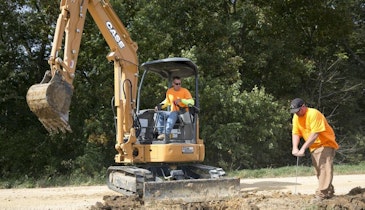Reporting incidents to regulatory and oversight organizations like OSHA can be harrowing, but ironically, the best way to avoid such negative interactions is to be proactive in contacting the agency.
Fortunately for contractors who may be hesitant to broach the subject of working conditions lest they incur the wrath of OSHA, there is a way to preemptively avoid punitive measures through the On-Site Consultation Program.
“OSHA understands that working with stakeholders is a great way to achieve the mission of ensuring safe and healthful working conditions,” says Kimberly Darby, an OSHA spokesperson. “The consultation program offers no-cost, voluntary and confidential occupational safety and health services to small and medium-sized businesses.”
It may be tempting to believe that government organizations want to catch contractors red-handed, but the reality is that it’s in everyone’s best interest to prevent accidents whenever possible.
“This program provides an opportunity for employers to work with the agency to find and fix hazards, achieve compliance, and establish or improve safety and health programs,” Darby says. “Consultation services are separate from enforcement and do not result in penalties or citations.”
As a no-cost program, the only commitment by those seeking consultation is the time it takes to do the review and the commitment to correct any serious issues found — which the company will not be penalized for during the consultation.
“No citations or penalties will be issued. The employer’s only obligation is to correct serious safety and health hazards,” Darby says. “They will be provided information about potential hazards at their work sites, receive advice on complying with OSHA standards, and receive assistance with establishing and improving safety and health programs.”
The consultation process
To initiate an OSHA review, contractors and subcontractors should coordinate to provide input across the breadth of the work area and project, and because it is a voluntary process, the employer must request the service.
Once the request has been made, the regional consulting office will initiate a review based on the scope indicated by the employer. It can be as specific or broad as the company desires.
The consultant will discuss the employer’s specific needs and set up a visit based on the priority assigned to the employer’s request, work schedule and amount of time needed for the consultant to adequately prepare to provide assistance.
A consultation itself consists of an opening conference, a walk-through of the work site or facility, as well as a review of written injury logs and safety programs. The closing conference will entail a final review with the employer of the OSHA consultant’s findings, wherein they will discuss any necessary safety mitigation or remedies.
Detailed written reports follow the review, again explaining the findings and confirming hazard correction dates.
“When deciding to use the consultation program, employers must determine the scope of the safety and/or health assessment desired; contact their state’s consultation program office to request the assistance; and agree to correct serious and imminent danger hazards identified during the consultation visit,” Darby says. “Based on the scope of the request for assistance, consultants will conduct safety and health assessments of the employer’s entire facility or a portion of the facility.”
It is recommended that employers have injury and illness logs, written safety and health protocols, and workplace policies ready for review. They will be provided information about potential hazards at their work sites, receive advice on complying with OSHA standards, and receive assistance with establishing and improving safety and health programs.
Don’t procrastinate
While committing to an unknown level of hazard mitigation can be daunting, delay in assessing health and safety concerns will cost exponentially more.
“Don’t underestimate the cost of a workplace incident, and don’t assume that the cost of hazard abatement will be expensive. The solution may be as simple as relocating materials that are blocking an exit or correctly labeling chemicals,” Darby says. “Improving workplace safety and health also brings fewer accidents, lowers injury and illness rates, decreases workers’ compensation costs, reduces equipment damages and limits product losses.”





